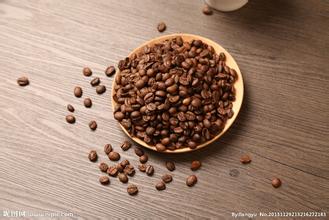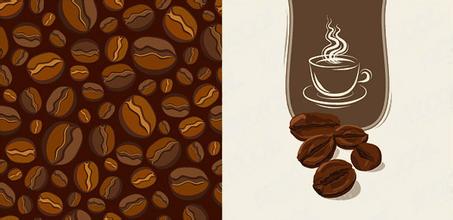Taste and Flavor description of Deep-roasted Coffee introduction to Variety treatment in producing area
Taste and Flavor description of Deep-roasted Coffee introduction to Variety treatment in producing area
After pouring the coffee powder into the drip filter cup, gently shake it to make it flat, this is a very easy to ignore step, or too hard, shake too many times, it is not advisable. The smoothness of noodles determines the uniformity of stewing and extraction of hand-made coffee, which directly leads to the taste of coffee. Many people choose ground coffee powder for convenience, or grind a lot at one time and put it in the refrigerator. In fact, "fresh grinding" is the first condition of good coffee, it ensures the taste of coffee. When the coffee is ground into powder, the oxidation rate of the coffee powder is accelerated, and the aroma begins to lose in 40 seconds. If the aroma of coffee powder is seriously lost, the flavor of natural coffee will disappear. There are all kinds of bean grinders on the market, and a good bean grinder can ensure that the coffee powder is evenly ground. If the coffee powder is uneven and the fine powder is too much, it will make the coffee taste not "pure". What is the suitable thickness of hand-brewed coffee beans? The answer is: moderate grinding, the size of granulated sugar. If the coffee powder is too thick and the hot water flows too fast, it is difficult to extract the aromatic substances from the coffee. If the coffee powder is too fine, the filter is easy to clog, resulting in water and powder soaking for too long, coffee will appear bitter, astringent taste
In addition to the labeling related to the place of origin, the most common is the marking of baking degree. Raw coffee beans need to go through the roasting process to release their unique charming aroma, and the roasting of coffee is closely related to its flavor. If you see "Italy", "Vienna", "Nanyi" and other signs on the coffee label, do not mistakenly think that the coffee beans have anything to do with the above place names-probably not, because traditionally, "Italy" and "Vienna" are synonymous with the degree of roasting (or blending) and do not mean that they are made in Italy or Vienna (as mentioned above). Coffee beans are not grown and produced in Europe. "North Italy" represents the baking of light, light brown beans without oil; "South Italy" refers to the deep baking of bright oil and dark brown on the bean surface; and "Italian baking" generally refers to deeper baking. "French baking (FrenchRoast)" generally refers to the extremely deep baking with a near-black color, slightly coke flavor and no acid. "Vienna" usually refers to a mixture of coffee beans with different degrees of roasting. The name of the country is immediately followed by the marking of small producing areas. Take Ethiopia-Ethiopia (EthiopiaYirgacheffe) as an example. Ethiopia's Ethiopia is the name of the coffee-producing country, indicating that it is a "single coffee". The Ethiopia is a narrow, long, high-altitude producing area in Ethiopia's Sidamo district. Different small producing areas mean different flavor characteristics. For example, Ethiopia's famous Ethiopia-Haramoka (EthiopiaHarrar) is produced in southern Ethiopia near Somalia. Haramoka has wine-like aromas, blueberry or grape flavors, thick palate, fresh and bright Yega snow coffee, citrus or lemon peel aromas, and a thin taste.

Important Notice :
前街咖啡 FrontStreet Coffee has moved to new addredd:
FrontStreet Coffee Address: 315,Donghua East Road,GuangZhou
Tel:020 38364473
- Prev

How to select the brand recommendation of coffee grinder
How to choose coffee grinder brand recommendation introduction if you plan to invest as little as possible, choose a manual bean grinder, more than 100 yuan can be easily used, of course, there are dozens of model machines, although cheap, but the grinding is not uniform. The result of several times is either too little strength to break the arm, or too much strength to break the handle of the bean grinder, so I suggest you buy one.
- Next

Step diagram of flannel hand-made coffee
Flannel hand coffee step diagram injection temperature is 80 degrees Celsius the water in the hand pot is 7 minutes full, pour hot water on the central coffee powder, although the amount of water is very small, but the coffee powder will absorb hot water and expand and infiltrate into the whole and let it stew for 60 seconds (first water injection) when using flannel for the first time, you need to rinse with hot water, or you can use a brush. And then put it in the coffee.
Related
- What brand of black coffee is the most authentic and delicious? what are the characteristics of the flavor of the authentic Rose Summer Black Coffee?
- Introduction to the principle and characteristics of the correct use of mocha pot A detailed course of mocha pot brewing coffee is described in five steps.
- Which is better, decaf or regular coffee? how is decaf made?
- How much is a bag of four cat coffee?
- How about four Cat Coffee or Nestle Coffee? why is it a cheap scam?
- Which is better, Yunnan four Cats Coffee or Nestle Coffee? How about cat coffee? is it a fake scam? why is it so cheap?
- How about Cat Coffee? what grade is a hoax? which instant coffee tastes better, four Cat Coffee, Nestle Coffee or G7 coffee?
- Process flow chart of coffee making-Starbucks coffee making process what coffee tastes good at Starbucks
- The top ten best coffee beans in the world Rose summer coffee or Tanzanian coffee tastes good
- Yunnan four cat coffee is good to drink?_four cat coffee is a big brand? four cat blue mountain coffee is fake?

